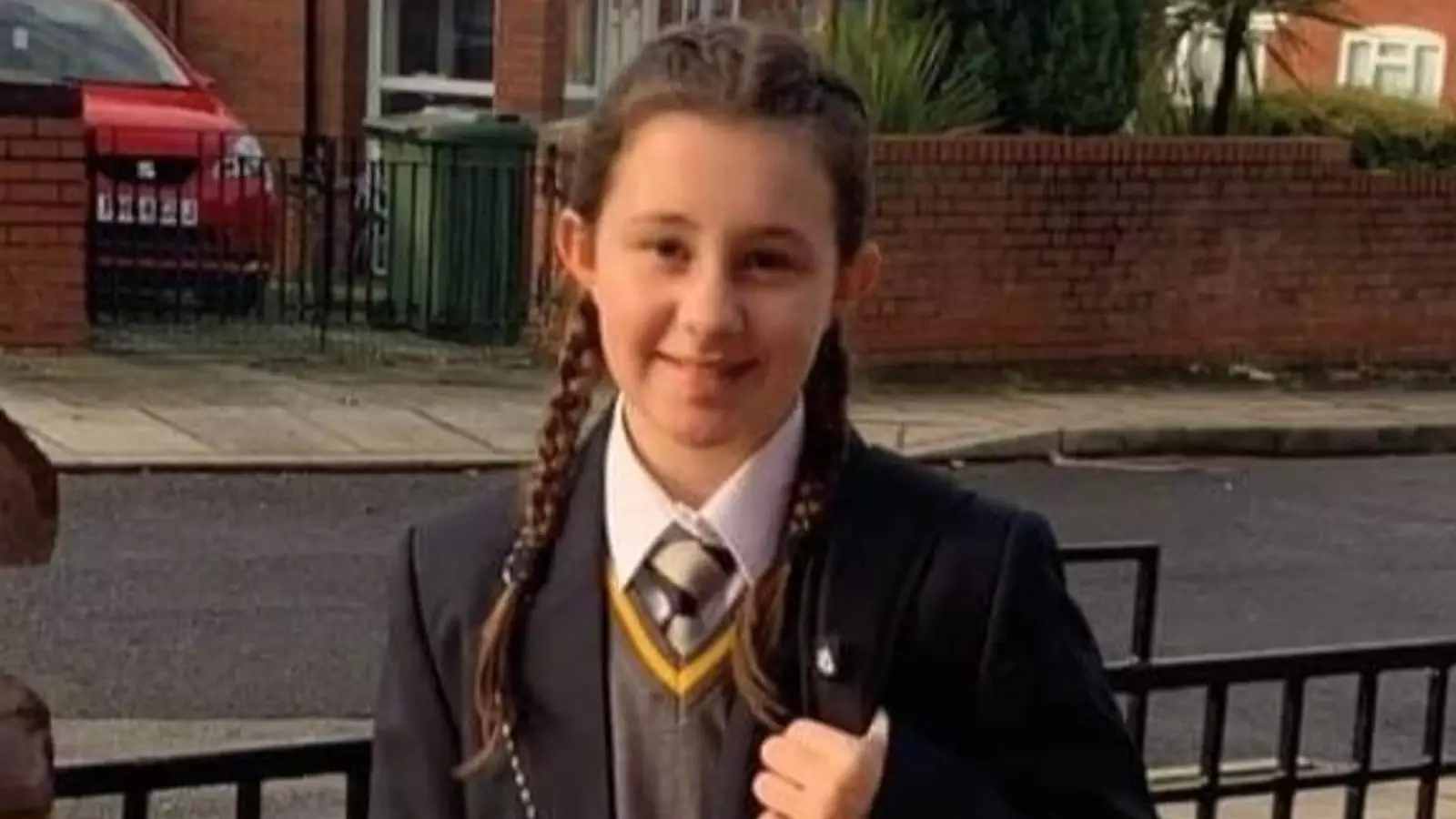The gruesome murder of 12-year-old Ava White has become a painful reminder of the consequences of unchecked violence and the far-reaching impacts of tragedy on families and communities. On the fateful evening in November 2021, while the city of Liverpool illuminated its streets with Christmas lights and festive cheer, Ava’s life was shattered in a senseless act of aggression. As her family grapples with the loss, it is hard not to feel a fire of indignation at the fact that the perpetrator, now known to be Harry Gilbertson, has been granted certain protections in a system that seemingly prioritizes his comfort over the suffering of the victims.
Ava’s mother, Leeann White, has emerged as a voice of the silenced, fiercely advocating for recognition of her daughter’s name, and yet she faces a haunting truth: Gilbertson has been allowed to return to a life of relative ease—one where he can attend school and, as it turns out, even post selfies while Ava’s family is left to bury a child. This stark disparity raises an uncomfortable question: Is the justice system skewed in favor of youthful offenders to the detriment of the victims?
The Weight of Injustice
This case highlights broader systemic issues in the judicial framework surrounding young offenders. The reporting restrictions that shielded Gilbertson until he reached adulthood were ostensibly put in place to protect his siblings; however, it seems glaringly unfair that Ava’s family, who have had to navigate the choppy waters of explaining their loss to other children, were not afforded the same concern. The double-edged sword of privacy for the guilty while victims are left entirely exposed is deeply troubling.
The heart-wrenching sentiment expressed by Ms. White—that she is forced to live with the consequence of Gilbertson’s actions while he receives a slap on the wrist for his behavior—evokes outrage. The image Ms. White paints of Gilbertson’s carefree attitude, seemingly unbothered by the heinous crime he committed, serves as a slap in the face to a family that cannot escape the burden of grief. This dichotomy raises the question: Are we doing enough to hold young offenders accountable, or are we creating a loophole that allows the likes of Gilbertson to disguise their actions behind their age?
Community Reactions and the Call to Action
After the tragedy, Ms. White took initiation, channeling her grief into proactive measures by founding a charity aimed at addressing the epidemic of knife crime—the very instrument that took her daughter’s life. It is a poignant illustration of turning personal anguish into community action. The introduction of bleed control kits, which have already saved lives, is commendable; however, it pushes the larger issue to the forefront: why must victims’ families take it upon themselves to ensure safety and stop the recurrence of crime? It should not fall to grieving parents to make such proactive moves; it should be a societal obligation enforced by the state.
Ava’s death calls for reflection beyond just the injustices faced by her family; it demands an urgent and collective response to stem the tide of knife violence in the UK. The apparent increase in violent incidents should ignite a fire beneath policymakers and community leaders. Ms. White’s assertion that “the way knife crime is, it’s not going down; it’s getting worse,” should provoke a rigorous examination of safety protocols in schools and public spaces. If acknowledging the very existence of knife crime results in greater awareness and action, can we afford to remain silent?
Balancing Compassion and Accountability
The anguish of losing a child is an unspeakable burden—one that goes hand-in-hand with a longing for justice. As society grapples with the complexities of crime, particularly when perpetrated by minors, we must carefully navigate the thin line between compassion for young offenders and accountability for their actions. Victims like Ava White should never be forgotten amidst the discussion of culpability.
As Gilbertson steps further into adulthood, the gravity of Ava’s loss continues to loom large over his community; her name deserves as much recognition as his. Ava’s tragedy is not an isolated event but part of a troubling trend that requires serious attention. In the end, it becomes evident that it is not merely a case of justice served; it is about honoring a life that should have blossomed, a life valuable enough to refuse being eclipsed by the face of a murderer.


Leave a Reply